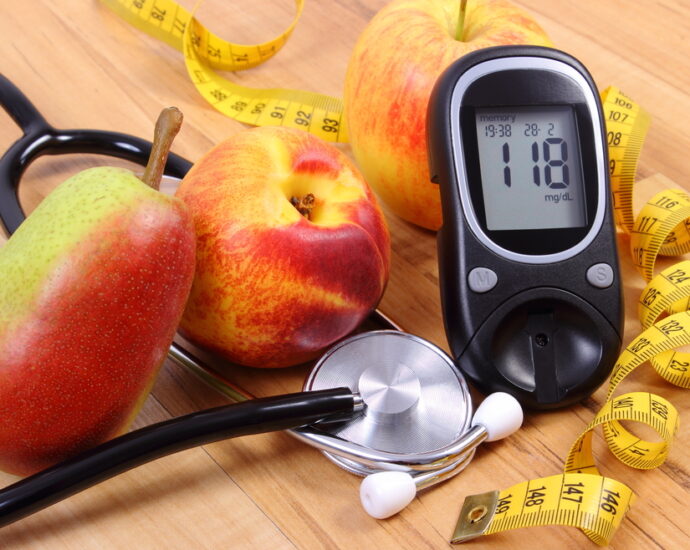For individuals managing diabetes, monitoring sugar intake is a critical part of maintaining stable blood glucose levels. This necessity often leads to confusion and concern about whether natural sugars found in fruit are safe to consume. The common question arises: should diabetics be afraid of sugar in fruit? The short answer is no—fruit can and should be part of a healthy diet for most people with diabetes. However, there are important considerations to keep in mind to make informed choices.
Page Contents
Understanding the Sugar in Fruit
Fruit contains natural sugars, primarily fructose and glucose. These are different from added sugars found in processed foods. Fruits also offer essential nutrients including fiber, vitamins, minerals, and antioxidants, which contribute to overall health and help manage blood sugar levels more effectively than foods with refined sugars.
The fiber content in fruit plays a significant role in slowing down the absorption of sugar, which helps prevent blood sugar spikes. Whole fruits, as opposed to fruit juices or dried fruit, have the most beneficial impact due to their fiber content.
Types of Sugar and Their Impact on Blood Glucose
Not all sugars are created equal. Here’s a breakdown:
- Fructose: Found naturally in fruits. When consumed in whole fruit form, it has a relatively low glycemic index (GI), meaning it has a slower effect on blood sugar.
- Glucose: Also naturally occurring in fruits but raises blood sugar more quickly.
- Sucrose: A combination of glucose and fructose. It’s less prevalent in fresh fruits but common in added sugars.
The glycemic index and glycemic load (GL) of a food provide a more complete picture of how it affects blood glucose. Many fruits have a low to moderate GI and GL, making them suitable for diabetic diets in controlled portions.
Benefits of Eating Fruit for Diabetics
Despite the natural sugar content, fruits offer numerous benefits for people with diabetes:
- Rich in Fiber
Dietary fiber improves blood sugar control, aids digestion, and promotes a feeling of fullness, helping prevent overeating.
- Nutrient-Dense
Fruits are packed with essential nutrients like vitamin C, potassium, and folate, which support immune function, heart health, and overall metabolic processes.
- Antioxidants
Antioxidants in fruits help combat inflammation and oxidative stress, which are often elevated in individuals with diabetes.
- Heart Health
Many fruits contribute to cardiovascular health by lowering blood pressure and cholesterol, which is particularly important for diabetics.
Best Fruits for People with Diabetes
Some fruits are better suited for blood sugar control due to their lower glycemic impact:
- Berries (strawberries, blueberries, raspberries): High in fiber and antioxidants with a low GI.
- Apples: Contain fiber and vitamin C; best eaten with the skin.
- Pears: Low GI and a good source of fiber.
- Oranges: High in vitamin C and fiber; avoid orange juice due to the lack of fiber and higher sugar concentration.
- Cherries: Have a low glycemic index and are rich in antioxidants.
- Peaches and Plums: Moderate GI and full of nutrients.
- Kiwi: Low in sugar and high in vitamin C and fiber.
Fruits to Eat with Caution
While most fruits can be included in a diabetic diet, some require moderation:
- Bananas: Higher in carbohydrates; opt for smaller portions and pair with protein or fat.
- Grapes: Easy to overeat; keep servings small.
- Pineapple and Mango: Higher GI; consume in moderation.
- Dried Fruits: Highly concentrated sugars; best avoided or eaten sparingly.
- Fruit Juices: Lack fiber and spike blood sugar quickly.
Tips for Including Fruit in a Diabetic Diet
Here are some guidelines to help manage fruit consumption effectively:
- Monitor Portions
Stick to recommended serving sizes (e.g., 1 small apple, ½ banana, 1 cup of berries). Overeating even low-GI fruits can affect blood sugar.
- Pair with Protein or Healthy Fats
Combining fruit with protein or fat slows sugar absorption and prevents spikes. Try apple slices with peanut butter or berries with Greek yogurt.
- Choose Whole Fruits Over Juices
Whole fruits retain fiber, which helps regulate blood sugar. Avoid fruit juices and smoothies unless they are low in sugar and high in fiber.
Consuming fruit at different times rather than all at once helps maintain stable glucose levels.
- Monitor Blood Sugar Levels
Track how different fruits affect your body by checking blood glucose before and after eating. This personal data can guide better choices.
Common Myths About Fruit and Diabetes
Myth: All sugar is bad for diabetics
Fact: Natural sugars in whole fruits are balanced with fiber and nutrients that mitigate their impact on blood sugar.
Myth: Diabetics should avoid all fruits
Fact: Most fruits are safe and beneficial in moderation.
Myth: Fruit smoothies are a healthy choice
Fact: Many commercial smoothies are high in sugar and low in fiber. Homemade smoothies with whole fruits and added protein are better options.
Conclusion
Fearing the sugar in fruit is a common misconception among people with diabetes. Whole fruits, in moderate portions, are not only safe but beneficial for overall health. They provide essential nutrients, fiber, and antioxidants that help manage blood sugar and prevent complications.
The key lies in making informed choices—opting for low-GI fruits, controlling portions, and pairing with proteins or fats to slow absorption. By understanding how fruit affects your body and working with a healthcare provider or registered dietitian, you can enjoy the natural sweetness of fruit without compromising your diabetes management.
READ MORE: Healthy Lifestyle Can Help Prevent Diabetes
Sources:
https://healthsurgeon.com/nutrition/understanding-fruits-sugar/
https://diabetes.org/food-nutrition/reading-food-labels/fruit
https://www.webmd.com/diabetes/fruit-diabetes
